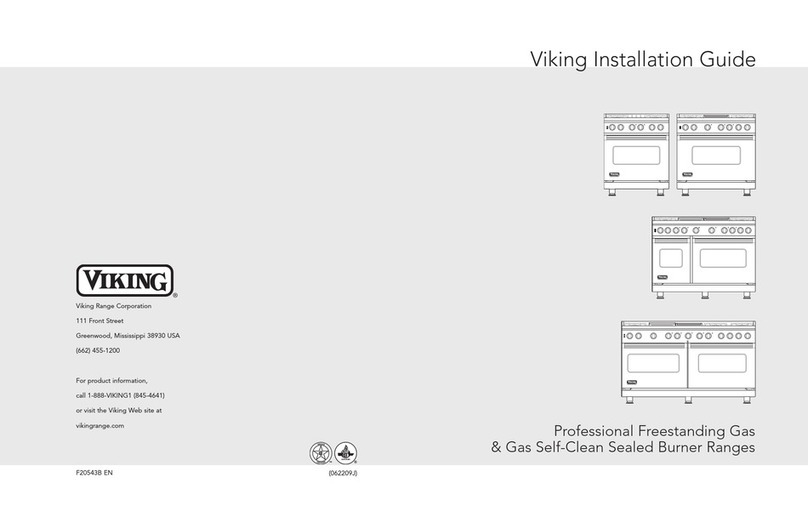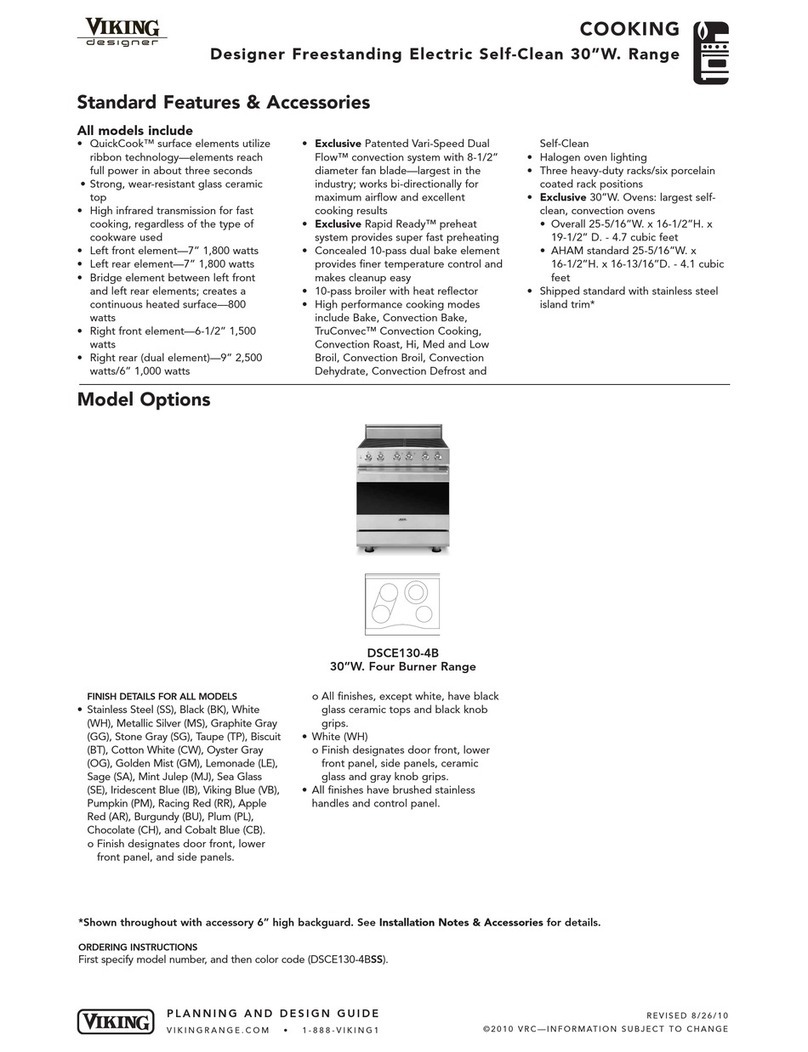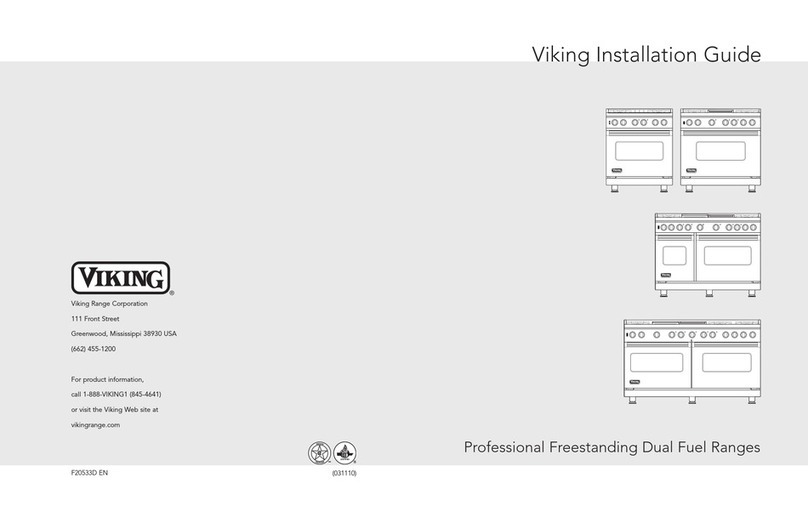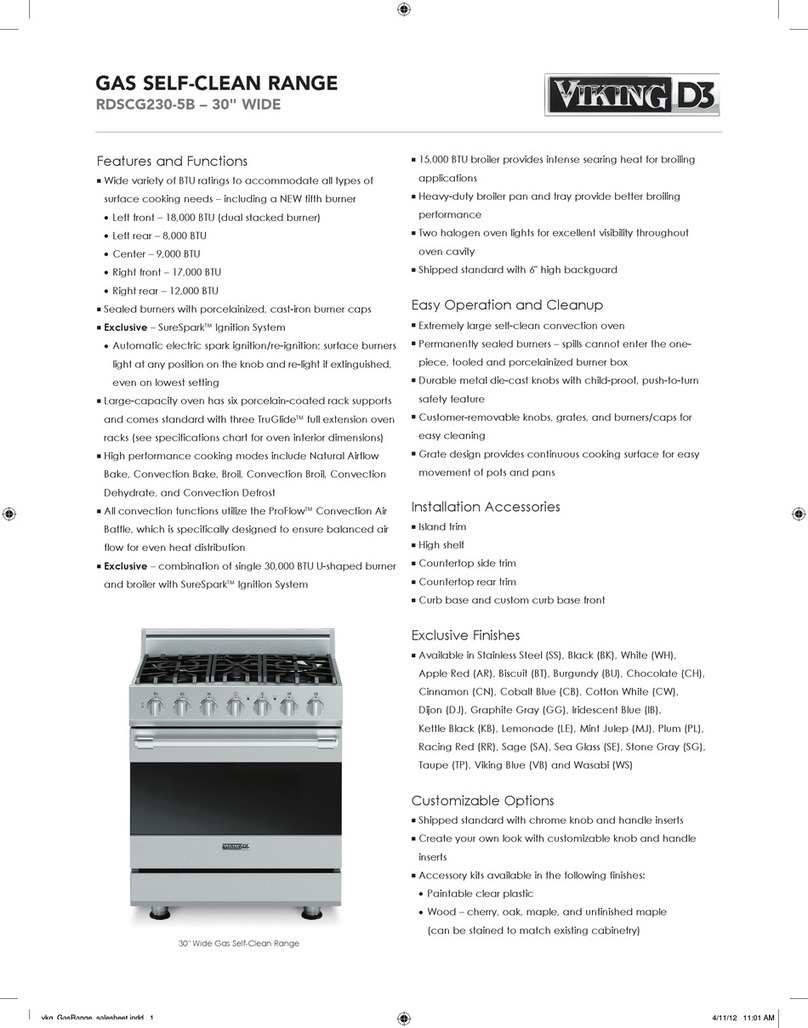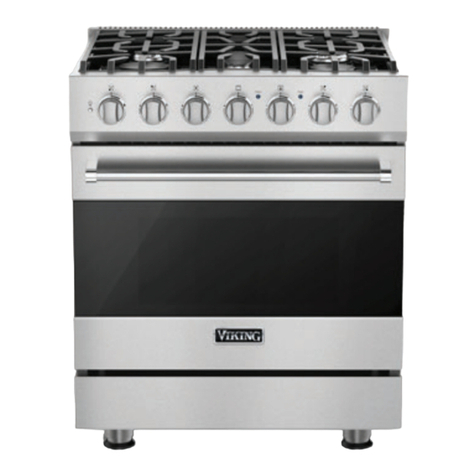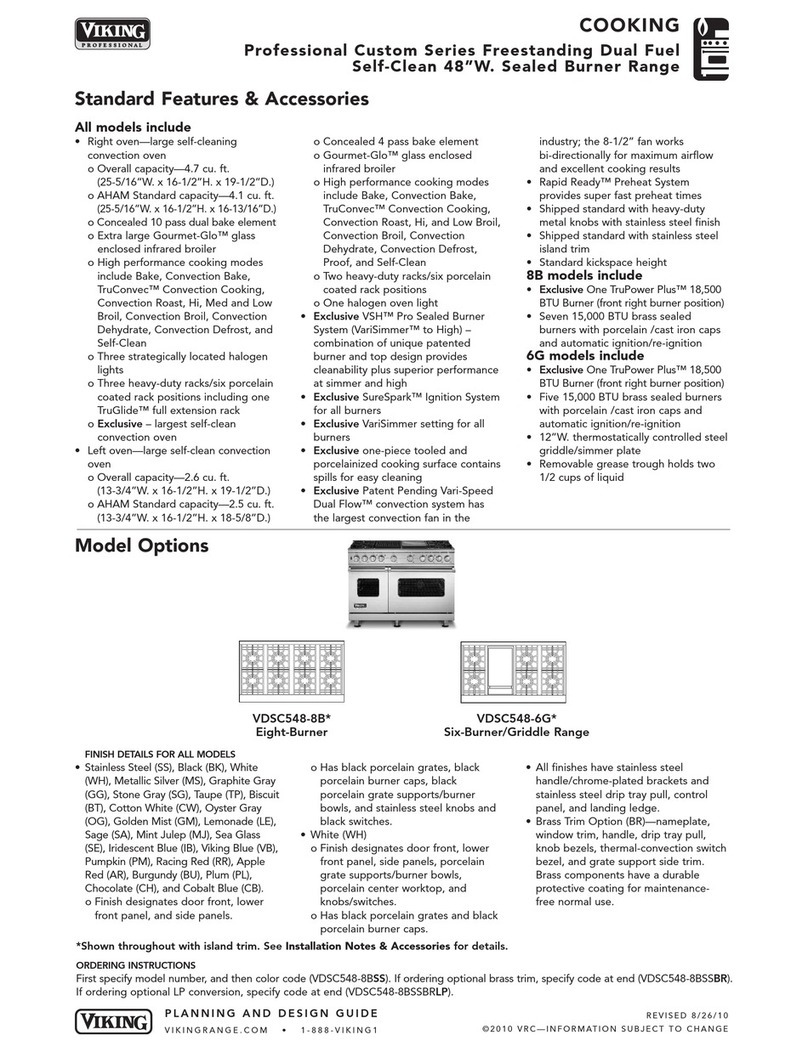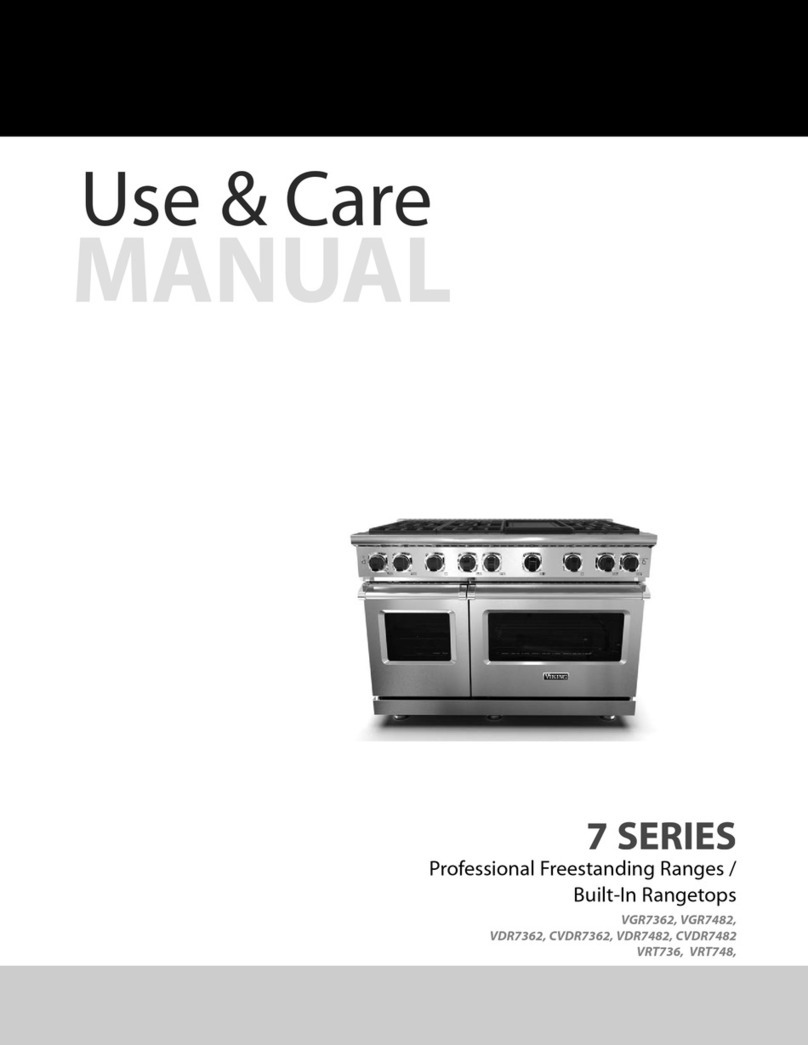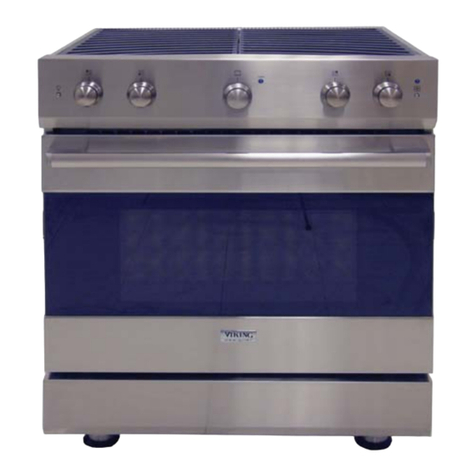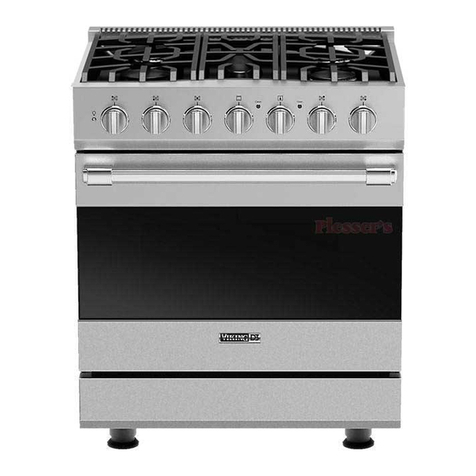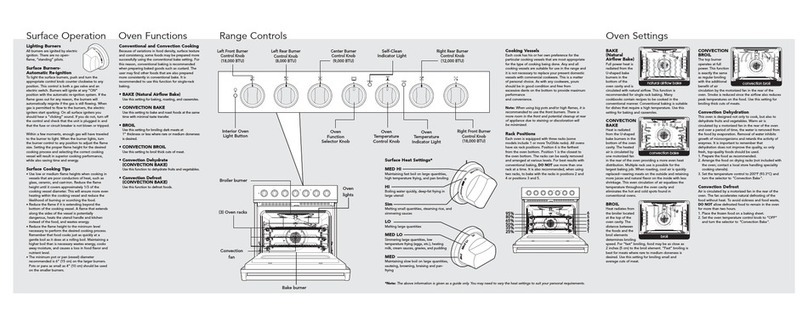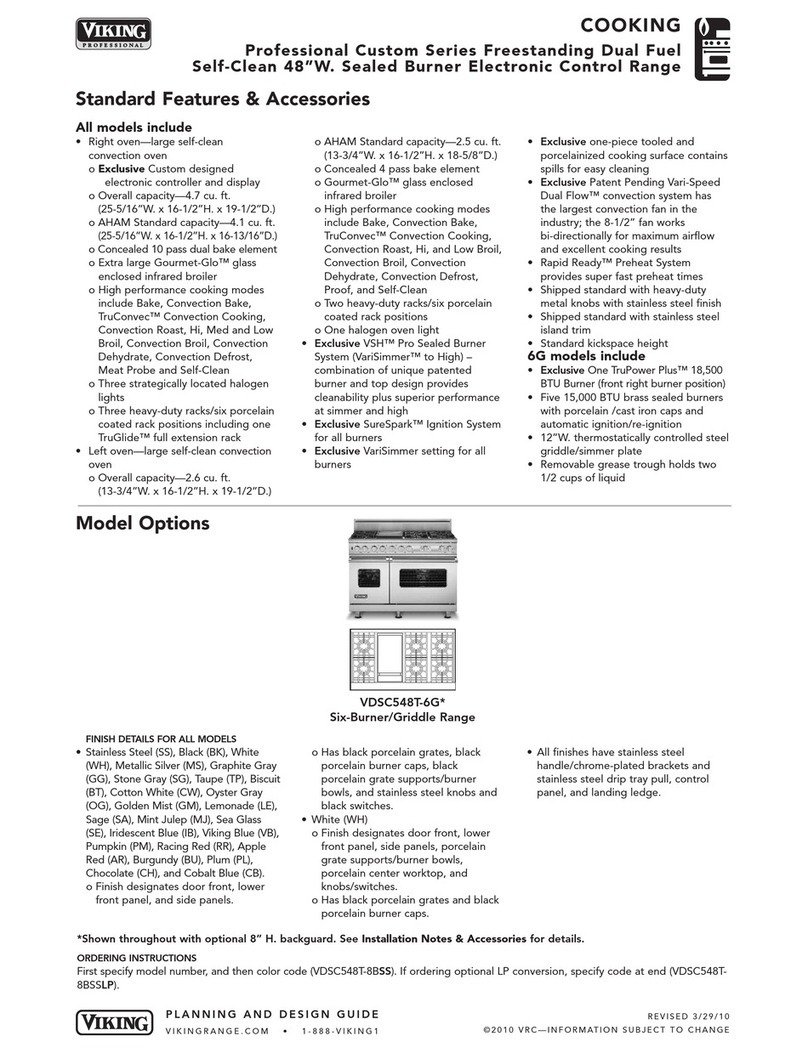9
Utensil Safety
(cont.)
• Only certain types of glass, glass/ceramic, ceramic or glaze utensils are
suitable for rangetop surface or oven usage without breaking ue to the
su en change in temperature. Follow manufacturer's instructions when
using glass.
• This appliance has been teste for safe performance using conventional
cookware. DO NOT use any evices or accessories that are not specifically
recommen e in this gui e. DO NOT use eyeli covers for the surface units,
stovetop grills, or a -on oven convection systems. The use of evices or
accessories that are not expressly recommen e in this manual can create
serious safety hazar s, result in performance problems, an re uce the life
of the components of the appliance.
• The flame of the burner shoul be a juste to just cover the bottom of
the pan or pot. Excessive burner setting may cause scorching of
a jacent counter-top surfaces, as well as the outsi e of the utensil. This
is base on safety consi erations.
Heating Elements
• NEVER touch oven bake an broil burner areas or interior surfaces of oven.
• Bake an broil burners may be hot even though they are ark in color. Areas
near burners an interior surfaces of an oven may become hot enough to
cause burns.
•
During an after use, DO NOT touch or let clothing or other flammable
materials contact heating elements, areas near elements, or interior surfaces
of oven until they have ha sufficient time to cool.
Other surfaces of the
oven may become hot enough to cause burns, such as the oven vent
opening, the surface near the vent opening, an the oven oor win ow.
Cleaning Safety
• Turn off all controls an wait for appliance parts to cool before touching or
cleaning them. DO NOT touch the burner grates or surroun ing areas until
they have ha sufficient time to cool.
• Clean appliance with caution. Use care to avoi steam burns if a wet sponge
or cloth is use to wipe spills on a hot surface. Some cleaners can pro uce
noxious fumes if applie to a hot surface.
•
DO NOT
clean oor gasket. It is essential for a goo tight seal. Care
shoul be taken not to rub, amage, or move the gasket.
• No commercial oven cleaner or oven liner protective coating such as
aluminum foil shoul be use in or aroun any part of the oven.
Improper oven liners may result in a risk of electric shock or fire. Keep
oven free from grease buil up.
Getting Starte
Warnings
8
Cooking Safety
(cont.)
•
ALWAYS
place oven racks in the esire positions while oven is cool.
Sli e oven rack out to a or remove foo , using ry, stur y pot-hol ers.
ALWAYS
avoi reaching into the oven to a or remove foo . If a rack
must be move while hot, use a ry pot-hol er.
•ALWAYS turn the oven off at the en of cooking.
• Use care when opening the oven oor. Let hot air or steam escape before
moving or replacing foo .
•NEVER use aluminum foil to cover oven racks or oven bottom. This coul
result in risk of electric shock, fire, or amage to the appliance. Use foil only
as irecte in this gui e.
•PREPARED FOOD WARNING:
Follow foo manufacturer's instructions. If a
plastic frozen foo container an /or its cover istorts, warps, or is otherwise
amage uring cooking, imme iately iscar the foo an its container. The
foo coul be contaminate
.
• If you are “flaming” liquor or other spirits un er an exhaust, TURN THE
FAN OFF. The raft coul cause the flames to sprea out of control.
• Once the unit has been installe as outline in the Installation
Instructions, it is important that the fresh air supply is not obstructe .
The use of a gas cooking appliance results in the pro uction of heat an
moisture in the room in which it is installe . Ensure that the kitchen is
well-ventilate . Keep natural venting holes open or install a mechanical
ventilation evice. Prolonge or intensive use of the appliance may call
for a itional (such as opening a win ow) or more effective ventilation
(such as increasing the level of a mechanical ventilation if present).
Utensil Safety
• Use pans with flat bottoms an han les that are easily graspe an stay
cool. Avoi using unstable, warpe , easily tippe or loose-han le pans.
Also avoi using pans, especially small pans, with heavy han les as they
coul be unstable an easily tip. Pans that are heavy to move when fille
with foo may also be hazar ous.
• Be sure utensil is large enough to properly contain foo an avoi boilovers.
Pan size is particularly important in eep fat frying. Be sure pan will
accommo ate the volume of foo that is to be a e as well as the bubble
action of fat.
• To minimize burns, ignition of flammable materials an spillage ue to
unintentional contact with the utensil, DO NOT exten han les over
a jacent surface burners. ALWAYS turn pan han les towar the si e or back
of the appliance, not out into the room where they are easily hit or reache
by small chil ren.
•NEVER let a pan boil ry as this coul amage the utensil an the appliance.
• Follow the manufacturer's irections when using oven cooking bags.
Getting Starte
Warnings

